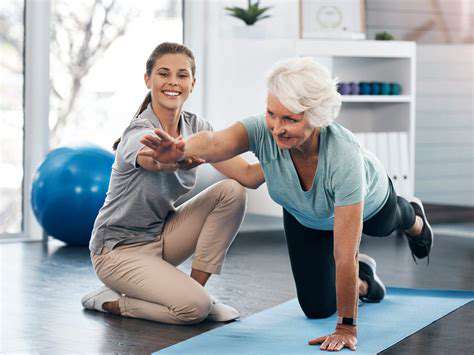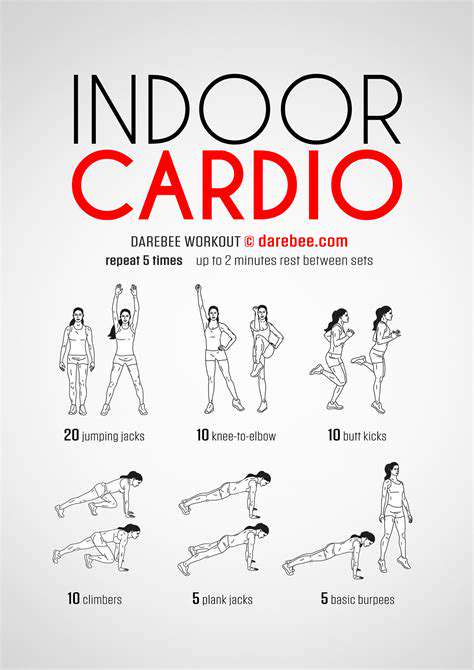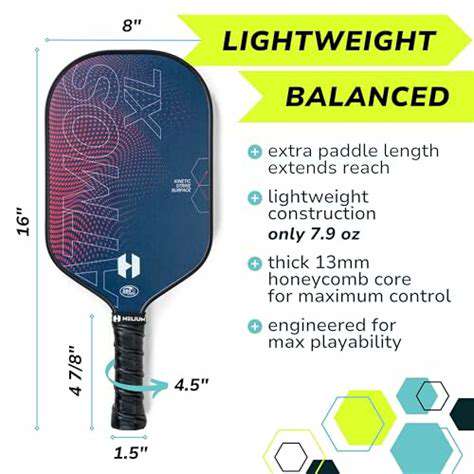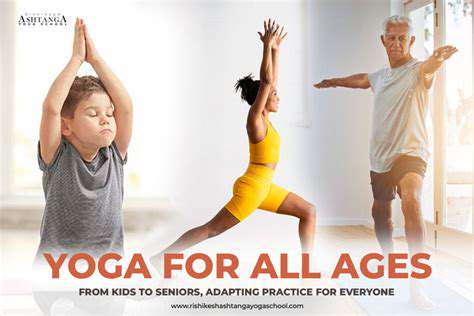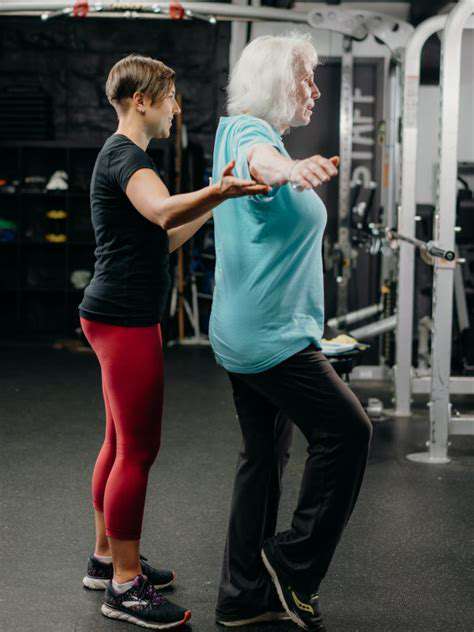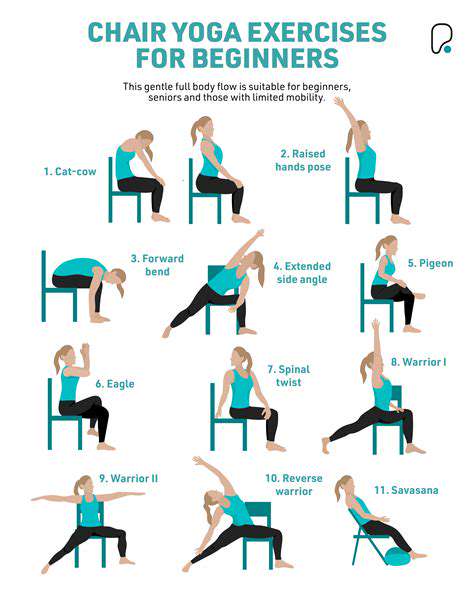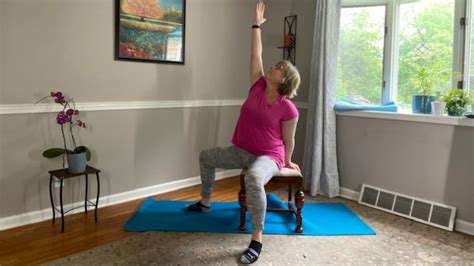Strength Training for Seniors to Boost Metabolism and Energy
Improving Balance and Mobility
Improving Balance
Maintaining balance is crucial for seniors, as falls are a significant concern. Improving balance directly impacts mobility and reduces the risk of injuries. Exercises focused on strengthening core muscles, improving proprioception (the awareness of body position), and practicing controlled movements can significantly enhance balance. This includes simple exercises like standing on one leg with eyes open, then closed, progressing to more challenging stances as balance improves. Regular practice of these exercises can lead to substantial improvements in stability and confidence while moving.
Specific balance exercises, often incorporating resistance bands or weights, can be tailored to individual needs and abilities. A qualified physical therapist or exercise specialist can create a personalized program that addresses any pre-existing conditions. The focus should be on gradual progression, ensuring safety and preventing overexertion. This approach will help seniors develop a strong foundation for improved balance and overall safety.
Enhancing Mobility
Mobility, the ability to move freely and easily, is essential for seniors to maintain independence. It allows for everyday activities like getting dressed, reaching for objects, and navigating stairs. Regular exercise plays a vital role in preserving and enhancing mobility. Exercises that target flexibility, range of motion, and joint stability are key components of a comprehensive mobility program. This includes stretching exercises, gentle yoga, and activities that involve controlled movements through different ranges of motion.
Incorporating mobility exercises into daily routines can help seniors maintain their independence and quality of life. Simple activities like walking, swimming, or using stationary bicycles can significantly contribute to increased mobility. By progressively challenging the body through these movements, seniors can maintain their ability to perform daily tasks and participate more fully in life's activities. Consistent effort is key to seeing improvements.
Strength Training for Seniors
Strength training is paramount for seniors, offering numerous benefits beyond just improved balance and mobility. It helps build muscle mass, which naturally declines with age. Increased muscle mass contributes to a higher metabolism, allowing seniors to burn more calories even at rest. This is vital for maintaining a healthy weight and preventing age-related health issues. This also improves bone density, reducing the risk of osteoporosis. Resistance training, whether using weights, resistance bands, or bodyweight exercises, is crucial for building and maintaining muscle strength.
Choosing appropriate exercises and weights is crucial for safety and effectiveness. It's often advisable to start with lighter weights and gradually increase the intensity as strength improves. Proper form is equally important to avoid injuries. A qualified trainer can provide guidance and ensure that exercises are tailored to individual needs and abilities. Strength training, when done correctly, can significantly enhance overall well-being and quality of life for seniors.
Nutrition and Lifestyle for Enhanced Balance and Mobility
A balanced diet rich in protein, calcium, and vitamin D is essential for supporting muscle growth, bone health, and overall well-being. Adequate hydration is also critical for joint lubrication and overall bodily functions. Maintaining a healthy weight is important for reducing stress on joints and improving balance. Prioritizing sleep, stress management techniques, and regular social interaction can further support physical and mental health, enhancing both balance and mobility. A holistic approach to well-being, incorporating both physical activity and lifestyle choices, is crucial for optimal results.
Regular check-ups with a doctor are paramount to ensure that any underlying health conditions are managed effectively. They can also advise on specific nutritional needs and appropriate exercise regimens. Following medical advice and professional recommendations is essential for ensuring safety and efficacy in any exercise program. This holistic approach to health and well-being is particularly important for seniors and can significantly contribute to their ability to maintain balance and mobility.
Creating a Sustainable Routine
Understanding the Importance of Routine
Establishing a sustainable routine is crucial for incorporating strength training into your daily life. A consistent schedule, whether it's morning, afternoon, or evening, helps build habits and makes exercise feel less like a chore and more like a necessary part of your day. This consistency is key to long-term success and ensures that the positive effects of strength training are maintained over time. Creating a routine also allows you to anticipate your workouts and prepare accordingly, minimizing potential obstacles.
A sustainable routine considers your personal preferences, lifestyle, and physical capabilities. It's about finding a routine that you can realistically maintain, not one that's overly demanding or restrictive. This approach promotes adherence, which is essential for experiencing the full benefits of strength training.
Setting Realistic Goals
When creating a sustainable strength training routine for seniors, it's vital to set realistic and achievable goals. Don't try to do too much too soon. Start with manageable exercises and gradually increase the intensity, sets, or repetitions as your strength and endurance improve. Focusing on small, incremental improvements will foster a sense of accomplishment and motivate you to continue.
Realistic goals also consider your current fitness level and any existing health conditions. Consulting with a healthcare professional or a certified personal trainer can provide tailored guidance and ensure that your goals align with your individual needs.
Choosing the Right Exercises
Selecting suitable exercises is paramount to a successful and safe strength training routine. Choose exercises that target major muscle groups, such as legs, back, chest, and shoulders. Consider exercises like squats, lunges, push-ups (modified if needed), rows, and shoulder presses. Always prioritize proper form to prevent injuries and maximize results. This means focusing on controlled movements and using appropriate weights or resistance.
Gradual Progression and Variation
A key element of a sustainable routine is gradual progression. Increasing the weight, repetitions, or sets gradually over time allows your muscles to adapt and get stronger without putting undue stress on your body. This progressive overload is essential for continuous improvement. Ensure you have adequate rest periods between sets and exercises to allow for muscle recovery.
Varying your exercises and routines can also prevent boredom and plateaus. Trying different exercises or changing the order of exercises can keep your workouts interesting and challenge your muscles in new ways.
Importance of Rest and Recovery
Rest and recovery are often overlooked but are crucial components of a sustainable strength training routine. Adequate rest allows your muscles to repair and rebuild, leading to increased strength and reduced risk of injury. Listen to your body and take rest days when needed. Proper sleep is also essential for muscle recovery and overall well-being.
Pay attention to any signs of fatigue or pain. Adjust your routine as needed to accommodate your body's needs and ensure that you're recovering effectively.
Nutrition and Hydration
A healthy diet and proper hydration are essential for supporting your strength training routine. Providing your body with the necessary nutrients to repair and rebuild muscles is crucial for progress. Focus on consuming adequate protein, which is vital for muscle growth and repair. Include plenty of fruits, vegetables, and whole grains in your diet. Stay well-hydrated by drinking plenty of water throughout the day.
Staying Motivated and Accountable
Maintaining motivation and accountability is key to sticking with a sustainable strength training routine. Find ways to stay motivated, such as setting realistic goals, rewarding yourself for progress, and tracking your workouts. Consider joining a fitness group or working with a trainer to stay accountable. Having a support system can make a significant difference in your ability to stay committed to your routine.
Surround yourself with a supportive environment. Share your goals with friends or family, and encourage them to join you in your fitness journey. This creates a sense of community and shared responsibility.


